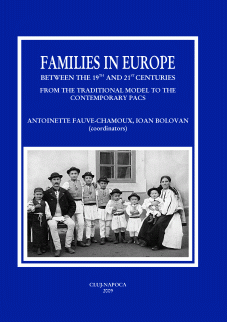Family models in Banat (19th - 20th Century)
Family models in Banat (19th - 20th Century)
Author(s): Carmen AlbertSubject(s): History
Published by: Centrul de Studiere a Populaţiei
Keywords: population; minorities; birth rate; depopulation
Summary/Abstract: The researches led by the Social Institute Banat-Crişana during the interwar period have focused, at least in the first part of its existence on the phenomenon of depopulation, which was researched for two locations: Belinţ and Sârbova. The conclusions made them reasonably believe that low birth rates were due to a reproductive behaviour copied from colonists from Banat, understood as ein, zwei kindersystem. There were other representatives of the Banatian elite who reported the phenomenon and they have observed it through the specifics of their profession. Thus, priests, teachers, doctors had agreed that the number of children decreased rapidly, especially in the case of the Romanian population, which is considered serious for the future of the province. The priests Virgil Pop, Gh. Cotoşman and Şt. Cioroianu, according to their observations or statistics, have concluded that the system was taken from the colonists of different nationalities / religions, becoming extremely dangerous. The German author, E. Feichter, noted the same phenomenon for Hungarian communities in Banat, which meant that not only Romanians faced this phenomenon, but others, too. These findings contradict the hypothesis of M. Kerék arguing that the zweikinder model is taken from the Protestant Hungarian population, through contamination of the Orthodox Romanians. For a clearer understanding of 1-2 children system and how it was transmitted in a sense or another, among different ethnic groups that compose Banat, we conducted a case study on the reproductive behavior of Reşiţa Montan. We believe that the Ethnic diversity of Banat is found at a smaller scale, in this city founded by colonization during the reign of Maria Theresa and of Joseph II. The research of registers of Orthodox, Evangelical, Protestant and Catholic parishes, have revealed data that allowed the conclusion that the Romanian population, which still had before the coexistence with other ethnic groups, a certain specific of the family system, to which there were added the infant mortality and a high rate of deaths, which led to extremely low natural growth, more than for the other nationalities.
Journal: Romanian Journal of Population Studies
- Issue Year: 3/2009
- Issue No: Supplement
- Page Range: 211-228
- Page Count: 18
- Language: English
- Content File-PDF

